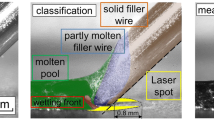Abstract
The use of aluminium alloys as the material of manufacturing has increased tremendously such as manufacturing of Nissan, Audi, Honda and BMW cars. However, there is lack of complete data on the best technique for restoration of obliterated serial numbers on such alloy used in the engine block. This research study was carried out to identify the most efficient and sensitive reagent among the five different etchants for restoration of obliterated markings on aluminium alloy surfaces. The aluminium alloy engine block of Nissan car was cut into small plates, and each plate was engraved with some alphanumerical characters using a computer-controlled “Gravograph” machine. Then, the marks were erased using abrasive papers to different levels (0.03 mm, 0.05 mm, 0.08 mm and 0.1 mm), below the bottom part of the engraving marks. The erased plates were etched by swabbing or immersion in each tested reagent. Etching with etchant that contained 10 g NaOH and 90 mL of water was useful to reveal the obliterated marks. Marks that were removed from 0.03 to 0.1 mm below the bottom of engraving were successfully restored with good contrast and in less time (minimum time of 23 min). Another reagent 10% aq. H3PO4 was also effective to restore the obliterated marks when the erased areas were immersed in it for long hours (minimum time of 21 h). On the other hand, reagent of 10% NaOH and 10% NHO3 had also achieved fair contrast and reproducible restoration of marks from 0.03 to 0.1 mm below the depth of engraving. All the restored alphanumerical characters on the plates were visualised using fluorescent powder irradiated with UV light. In contrast, other two tested reagents, i.e. 60% HCl and 40% NaOH, 1 N NaOH and 0.1 M HgCl2 in 0.1 N HCI, showed poor contrast restoration and hence were not recommended for practical application. The findings from this research would help the investigator particularly in stolen car cases to choose the best etching reagent for restoration of obliterated serial numbers as well as to improve etching procedures on the aluminium alloy surfaces used in the car engines.


Similar content being viewed by others
References
Heard B J, Handbook of Firearms and Ballistics: Examining and Interpreting Forensic Evidence, Wiley, New Jersey (1997) p 213.
Katterwe H, Restoration of Serial Number, Academic Press, Amsterdam (2006) p 177.
Petterd C, Encyclopedia of Forensic Science, Academic Press, San Diego (2000) p 1205.
Kuppuswamy R, Metallographic Etching of Aluminium and Its Alloys for Restoration of Obliterated Marks in Forensic Science Practice and Investigations, InTech, Croatia (2011) p 332.
Voort G F V, Metallography: Principle and Practice, McGraw Hill Book Company, New York (1984).
King F, Aluminium and its Alloys, Ellis Horwood, Chichester (1987).
Turley D M, J Forensic Sci32 (1987) 640.
Wightman G, and Matthew J, Forensic Sci Int180 (2008) 54.
Nickolls L C, The Scientific Investigation of Crime, Butterworth, Oxford (1956) p 150.
Chisum W J, J Forensic Sci Soc6 (1966) 89.
Massiah E, AFTE J8 (1976) 26.
Petzow G, Metallographic Etching, American Society for Metals, Ohio (1976).
Peeler G, Gutowski S, Wrobel H, and Dower G, J Forensic Ident58 (2008) 27.
Baharum M I, Kuppuswamy R, and Rahman A A, Forensic Sci Int177 (2008) 221.
Bong Y U, and Kuppuswamy R, Forensic Sci Int195 (2010) 86.
Nalini N, and Hemalatha M, J Forensic Ident53 (2003) 421.
Okayasu M, Sato K, and Mizuno M, J Mater Sci43 (2008) 2792.
Uli N, Kuppuswamy R, and Amran M F, Forensic Sci Int208 (2011) 66.
Azlan M Z M, Kuppuswamy R, and Harun H, Forensic Sci Int171(2007) 27.
Acknowledgements
We would like to thank all staff at Forensic and Analytical Laboratories, School of Health Sciences of USM Health Campus, for guidance and support towards this study.
Funding
None.
Author information
Authors and Affiliations
Contributions
All authors contributed to the design of the study. FNMA performed the experiments. All authors analysed the data, discussed and wrote the manuscript.
Corresponding author
Ethics declarations
Conflict of interest
The authors declare that they have no competing interests.
Additional information
Publisher's Note
Springer Nature remains neutral with regard to jurisdictional claims in published maps and institutional affiliations.
Rights and permissions
About this article
Cite this article
Mohd Aris, F.N., Zakaria, Y. & Nik Hassan, N.F. A Comparison of Restoration of Obliterated Markings on Aluminium Engine Block by Chemical Etching Techniques. Trans Indian Inst Met 73, 1867–1878 (2020). https://doi.org/10.1007/s12666-020-01997-7
Received:
Accepted:
Published:
Issue Date:
DOI: https://doi.org/10.1007/s12666-020-01997-7




